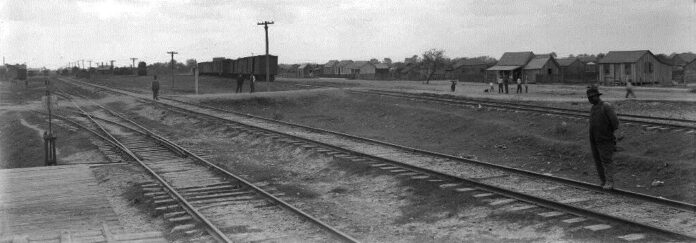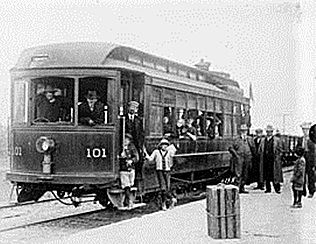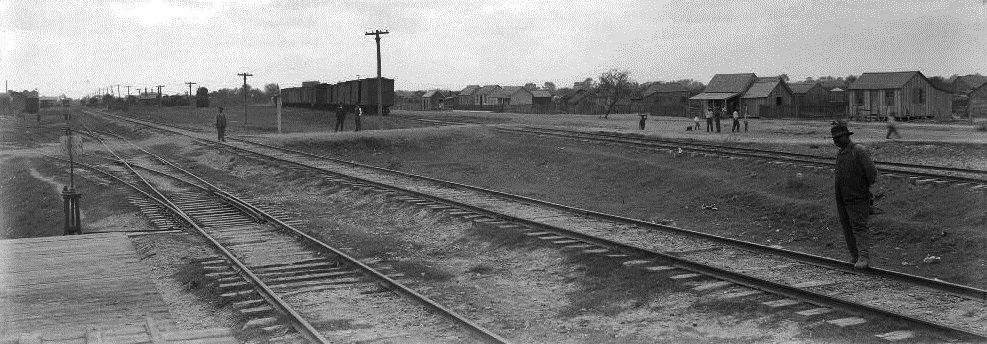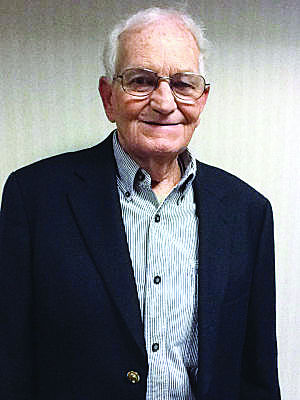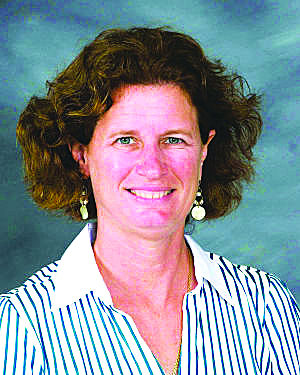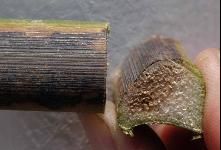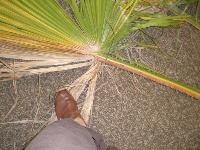BY NORMAN ROZEFF
EDITOR’S NOTE: This is the next installment in an ongoing series on San Benito’s Sam Robertson. To find previous articles, go to www.valleystar.com.
Robertson, upon completion of the Lott line, was still hard-pressed for money. He had however viewed the land and had come to realize its potential should it receive irrigation water pumped from the river and then allowed to flow in canals north by gravity. With a handshake and his good character Robertson was able to acquire 13,000 acres of Valley land at $3.00 an acre. Eventually it would grow into a 68,000 acre project.
He literally got his feet wet after taking a contract to install a modern pumping plant and expand the canal system at Santa Maria. An even larger project he took on was the canal system of the American Rio Grande Land and Irrigation Company at Mercedes. Contracts at Los Fresnos and El Jardin would follow. Now with some cash in his pocket, he could pursue his own project. In December 1906 he began to clear brush from the Resaca de los Fresnos, an ancient dried-up river bed extending from the river through he land he owned east of Harlingen.
Robertson’s scant capital soon dried up. As recounted earlier, he then turned for help to his acquaintances he had known near Beaumont. These were the Heywood Bothers who had made a fortune getting in early on the oil discovery at Spindle Top and later at the first oil field development in Louisiana at Jennings. Col. Elba Heywood was especially taken by the potential of the area. With a new bankroll, Robertson was able to complete the canal of the San Benito Land and Water Company and to found the town of San Benito. The subdivided land sold at first for $25.75 an acre, but with the sale of 4,000 acres in two weeks the price was upped to $50 an acre. Town lots also went for on the market for $50 and upwards. Sales were made for a down payment and 6 percent interest for the balance.
Robertson soon came to the conclusion that Valley farmers would be severely hindered in getting there produce to the rail heads. The dirt roads were poor, winding, and subject to becoming impassible after rains. Unless this problem was resolved his land sales would suffer. The solution, he believed, was to construct feeder rail lines to the main line. But, of course, his slim finances again came to fore. What he did was go to the large land owners and ask them to mortgage their unsold land for $10 an acre in order to aid his road. This succeeded.
He then approached George M. Dilley & Sons of Palestine, Texas and was able to get this firm to sell him rail on time. He had beforehand (February 14, 1912) incorporated the San Benito, Rio Grande Valley Interurban Railway Company along with the Brownsville Street & Interurban Railroad. With the latter he built two miles of track down Elizabeth Street, around the courthouse and out to West Brownsville. To be more specific, as recounted in “Tidbits” the line began near “the current Gateway Bridge, went up Elizabeth Street, turned left on 10th Street, then right up Levee. A two-way track continued to West Brownsville while a spur turned up 3rd Street to Washington Street and continued past Market Square and the Courthouse.”
The S.B.& R.G.V. advanced $78,l84.99 for the construction of the Brownsville Street Railway Line, which was not taken over but operated independently.
Chartered June 12, 1912, the San Benito and Rio Grande Valley Railway, or as it was affectionately called the “Spider Web” or “Sam Robertson’s Back Door Railroad” changed its name in August 1912 to the San Benito and Rio Grande Valley Railway Company.
Over time it would expand its range to north of Rio Hondo, south to the river and west to a small station south of Mission. Fred Robertson was its superintendent of construction for its first 90 miles of track built. He would later note that as soon as any mileage of track was in position, it would be put into commercial use.
Fred, who moved on in 1914, would go on to serve 21 years working for the San Benito Irrigation District. As innovative and ambitious as Sam Robertson was, he was always strapped for cash for his enterprises. The 1913-14 recession period certainly didn’t help matters. With the Frisco in debt to the Equitable Trust Company of New York, the S. B. & R.G.V. was in receivership. In late l9l4 or early l5 the Equitable Trust Co. of New York who owned $953,735.00, six percent gold bonds issued October, l9l2 and to mature October l942, had purchased all the capital stock from the Frisco. So it was on March 1, 1916 that the San Benito and Rio Grande Railway, the Spider Web, was acquired by the New Orleans, Texas and Mexico, itself emerging from receivership. The latter continued to operate it as a separate company.
Robertson remained as president and chief operating officer until he went into the army during the Great War. By 1925 when the line had been taken over by another railroad entity, it had routes north of Mission extending to Raymondville and beyond. Sam was its president and general manager until he entered the Army in 1917. Later George Winsor occupied these positions for may years.
Old railroad man, Floyd E. Rees of Kingsville, would later recall some dramatic incidents regarding the “Spider Web”. He wrote: “ The S.B.& R.G.V. has had its share of accidents like all Ry. Some of the oddest are: On Feb. 5, l9l5, conductor J.B. Franks was injured in the face while attempting to start a motor car with gun powder. I must say we have come a long way since l9l5 in the method of starting motor cars, auto, etc.
In Feb. l9l7 a section speedster with 6 men was returning to San Benito and when about l and l/2 miles from San Benito and crossing a bridge used by pedestrians, vehicles and the rail road, jumped the track and swerved to the side of the bridge and broke thru the supports and precipited (sic) the men and car in the canal water beneath. Two of the men were drowned, and the rest escaped uninjured. Where would you say this accident occurred – between San Benito and Rio Hondo or the San Benito to Santa Maria end?
From l9l3 thru l9l8 there were quite a few motor cars (gasoline speedsters used by maintenance employees) derailed account [of] striking horses, cows and even dogs but none account [of] striking autos. In most of these derailments one or more employees were injured [and] in one case the employee died.”
Still earlier, Sam had other dreams. His appetite for development, construction and large-scale agriculture had been whetted, in part, by Closner’s success. He became interested in sugarcane from various glowing reports. As early as October 1908, indications were afoot that a sugar mill was in the works. Publicized was the fact that the railroad would put in sidings at San Benito to accommodate a 2,400 ton per day sugar mill and refinery. The San Benito Land and Irrigation Company was forecast to plant 3,000 acres in sugarcane in 1909. On 3/6/09 the headline “San Benito Sugar Enterprise” and the story following revealed the San Benito Land and Water Company’s commitment to a future factory.
One thousand acres for sugarcane culture were to be set side, and the land, which was being cleared north of the railroad track, was to be the site of a 1,000 ton cane/day mill. Those involved included Col. Alba Heywood, president, R. E. Filcher of San Francisco, vice-president, E. H. Cox of Chicago, secretary, S. A. Robertson, treasurer, and Robert Lynn Butts of Austin, director and counsel. At least one grower, B. C. Zuber, living one mile from town, reported his seven month old sugarcane to be flourishing by mid-1909.
Although all the San Benito area cane was to be used for seed, more was needed to plant 1,200 acres and bring the total to 2,000. Farmers such as S. C. Cowgill, formerly of Montezuma, Indiana, would seed 250 of his 700 acres of resaca land in cane while another farm contracted to bring in 800 tons of seed. Roscoe E. Stephens of Indiana was convinced by absentee landowner Augustus A. Street of Indianapolis to come to San Benito to care for his cane land. Other growers were the Watts brothers and T. Y. McGovern.



